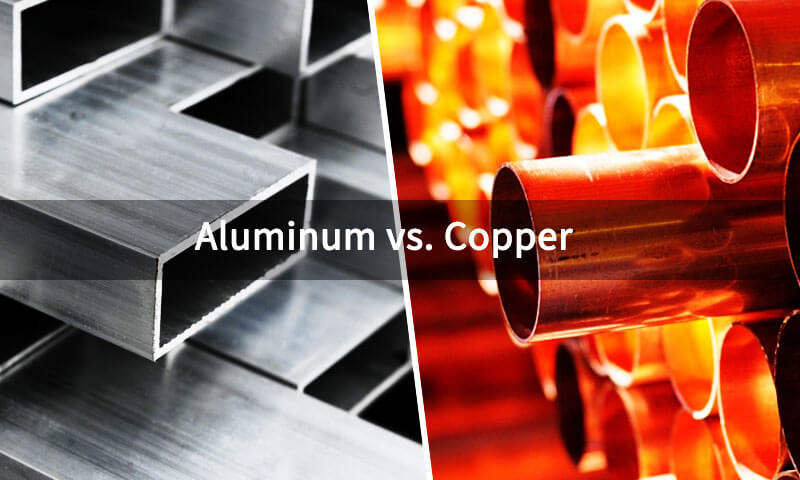1. Introduction
In the world of engineering materials, aluminum vs. copper stand out as two of the most widely used non-ferrous metals.
Their applications span across electrical systems, thermal management, transportation, construction, and industrial machinery.
Choosing between aluminum and copper requires a nuanced understanding of their properties, costs, and long-term performance.
This article offers a deep technical comparison between these two metals from multiple perspectives,
enabling informed material selection based on performance requirements, economic factors, and environmental considerations.
2. What Are Aluminum and Copper?
Copper and aluminum—both elemental metals with deep historical and industrial significance—offer contrasting advantages rooted in their atomic structures and alloy versatility.
Aluminum: The Lightweight Champion
Aluminum, with atomic number 13, is the most abundant metallic element in Earth’s crust, constituting approximately 8.2% by weight.
Extracted primarily from bauxite ore through the Bayer process and refined via electrolysis, aluminum has become synonymous with lightness, corrosion resistance, and adaptability.
In its pure form, aluminum is soft and ductile. However, through strategic alloying, it transforms into a high-performance material tailored for structural, thermal, and electrical applications.
Common alloying elements include magnesium, silicon, copper, zinc, and manganese, each contributing unique attributes such as strength, machinability, and fatigue resistance.
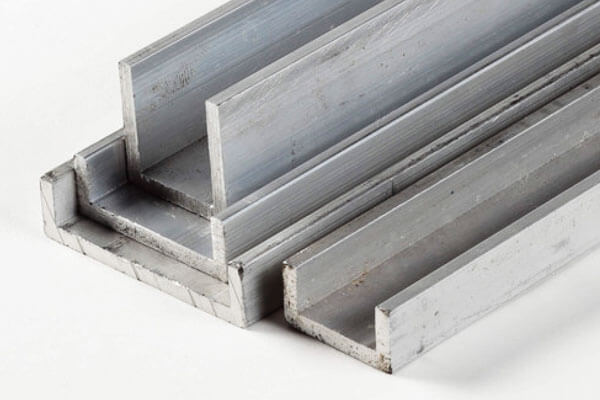
Key aluminum alloy series include:
- 1000 Series (Commercially Pure Aluminum): Over 99% pure, excellent for electrical conductivity and corrosion resistance, but low in strength.
- 3000 Series (Al-Mn): Non-heat-treatable, used in cookware and roofing for its formability and moderate strength.
- 5000 Series (Al-Mg): High strength-to-weight ratio and excellent corrosion resistance, particularly in marine applications.
- 6000 Series (Al-Mg-Si, e.g., 6061): Heat-treatable, offering a balanced combination of strength (tensile ~290 MPa), weldability, and corrosion resistance.
Ideal for structural extrusions in construction and automotive sectors. - 7000 Series (Al-Zn-Mg, e.g., 7075-T6): Aerospace-grade alloys, known for ultra-high strength (tensile strength ~572 MPa),
used in critical load-bearing components such as aircraft wings, landing gear, and mountain bike frames.
Copper: The Conductive Icon
Copper, atomic number 29, has played a foundational role in technological advancement, from early civilization tools to modern electronics.
With an earth-toned reddish luster and excellent ductility, it is unmatched in electrical conductivity among engineering metals, achieving an IACS rating of 100% (58 MS/m).
Pure copper (≥99.9% Cu), typically refined via pyrometallurgical or hydrometallurgical processes, is widely used in power transmission, telecommunications, and electronics.
However, the performance envelope of copper broadens significantly through alloying.

Major copper-based alloy families include:
- Brass (Copper-Zinc Alloys): Offers improved strength, ductility, and corrosion resistance.
For example, C36000 free-machining brass combines excellent machinability with moderate strength, commonly used in plumbing fittings and instrumentation components. - Bronze (Copper-Tin Alloys): Historically significant, bronzes are tough and corrosion-resistant. Applications include bearings, bushings, and marine components.
- Beryllium Copper (Cu-Be, e.g., C17200): Provides an exceptional combination of hardness (38–44 HRC), electrical conductivity, and non-sparking properties.
Ideal for high-stress components like aerospace connectors, springs, and precision instrumentation. - Nickel-Silver (Cu-Ni-Zn): While named for its silvery appearance, it contains no silver. Used in musical instruments and decorative hardware for its bright finish and formability.
3. Fundamental Physical Properties of Aluminum vs. Copper
| Physical Property | Aluminum | Copper |
|---|---|---|
| Atomic Number | 13 | 29 |
| Crystal Structure | Face-Centered Cubic (FCC) | Face-Centered Cubic (FCC) |
| Density (g/cm³) | 2.70 | 8.96 |
| Melting Point (°C) | 660.3 | 1084.6 |
| Coefficient of Thermal Expansion (µm/m·°C) | 23.1 | 16.5 |
| Appearance | Silvery-white | Reddish-brown |
4. Mechanical Properties of Aluminum vs. Copper
| Mechanical Property | Aluminum (6061-T6 / 7075-T6) | Copper (Pure / C17200) |
|---|---|---|
| Tensile Strength (MPa) | 290 / 572 | 210 / up to 1100 |
| Yield Strength (MPa) | 240 / 503 | 70 / up to 1000 |
| Hardness (BHN / HRC) | 95–150 BHN | 50 BHN / 38–44 HRC |
| Elongation at Break (%) | 10–20 | 20–40 |
| Fatigue Strength (MPa) | ~96 (6061-T6) | Higher in alloys (150–300 MPa) |
| Fracture Toughness | Moderate to low | High (especially in alloys) |
5. Electrical and Thermal Conductivity of Aluminum vs. Copper
In many engineering disciplines—particularly in power distribution, electronics, and thermal management—electrical and thermal conductivity are critical design factors.
While both aluminum and copper are classified as excellent conductors, their performance, cost, and physical behavior under load vary significantly.
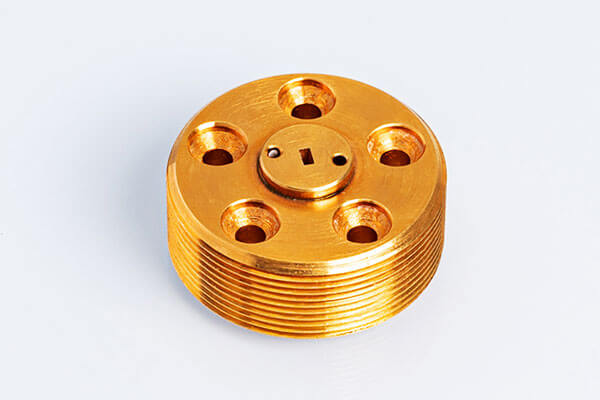
Electrical Resistivity and Conductivity Comparison
Electrical conductivity is measured in terms of how easily electrons can flow through a material. The lower the resistivity, the higher the conductivity.
- Copper is the benchmark for electrical conductivity among all commercial metals.
It boasts a resistivity of 1.68 × 10⁻⁸ Ω·m at 20 °C, corresponding to 100% IACS (International Annealed Copper Standard).
Its high purity (typically 99.99% Cu in electrical-grade applications) ensures minimal energy loss and heat generation. - Aluminum, although not as conductive as copper, offers approximately 61% IACS, with a resistivity of 2.82 × 10⁻⁸ Ω·m.
This makes it about 35–40% less conductive than copper per unit volume, but that picture changes when viewed per unit mass.
Because aluminum is much lighter (2.7 g/cm³ vs. 8.96 g/cm³), it provides twice the conductivity per unit weight.
This makes aluminum especially appealing in weight-sensitive power applications like aerial transmission lines.
| Property | Aluminum | Copper |
|---|---|---|
| Electrical Resistivity (Ω·m) | 2.82 × 10⁻⁸ | 1.68 × 10⁻⁸ |
| Conductivity (% IACS) | ~61% | 100% |
| Conductivity per Unit Mass | Higher | Lower |
Thermal Conductivity and Heat Dissipation
Thermal conductivity governs how well a material can transfer heat, a property vital in heat sinks, electronics cooling, automotive radiators, and industrial heat exchangers.
- Copper again takes the lead, with a thermal conductivity of approximately 398 W/m·K, among the highest of all metals.
- Aluminum has a lower but still excellent thermal conductivity of around 235 W/m·K,
which is sufficient for many heat management applications, especially where low weight and good formability are desired.
In high-performance electronics, copper is preferred where space is limited and thermal gradients are steep, such as in CPU/GPU heat spreaders.
However, aluminum’s balance of conductivity and machinability makes it the standard in consumer electronics, automotive radiators, and LED housings.
| Property | Aluminum | Copper |
|---|---|---|
| Thermal Conductivity (W/m·K) | ~235 | ~398 |
| Specific Heat Capacity (J/g·K) | 0.900 | 0.385 |
It’s worth noting that aluminum also has higher specific heat capacity, which allows it to absorb more thermal energy before its temperature rises—an advantage in systems subject to transient thermal loads.
Implications for Wiring, Heat Exchangers, and Electronics
In Wiring and Power Transmission:
- Copper remains the standard in most indoor electrical installations and high-performance electrical systems due to its higher conductivity and better fatigue resistance.
- Aluminum is widely used in overhead power lines, underground distribution, and busbars,
thanks to its light weight, lower cost, and acceptable conductivity—especially in large cross-section conductors.
For example, a 1000 mm² aluminum conductor weighs only one-third of its copper equivalent and costs significantly less, despite needing a slightly larger cross-sectional area to carry the same current.
In Heat Exchangers and Thermal Components:
- Copper is ideal where maximum heat transfer efficiency is required, such as in high-performance cooling systems, industrial refrigeration, or aerospace-grade heat pipes.
- Aluminum is favored for mass-market applications, including automotive radiators, HVAC fins, consumer electronics heat sinks, and aircraft environmental control systems,
due to its lightweight, corrosion resistance, and ease of extrusion or rolling into fins.
Aluminum Wiring vs. Copper Wiring
The debate between aluminum vs. copper wiring has been especially contentious in residential and industrial settings.
- Copper wiring is still preferred for most residential applications, especially in low-voltage circuits, due to its better reliability, lower contact resistance, and superior thermal stability.
- Aluminum wiring, especially in older installations, faced issues such as creep, galvanic corrosion, and connection loosening, which led to safety concerns.
However, modern AA-8000 series aluminum alloys, along with improved terminations and devices,
have largely mitigated these issues, making aluminum safe for certain approved applications such as feeders and service drops.
As a result, copper dominates short-distance, high-reliability applications, while aluminum is better suited for large-scale, long-distance distribution where cost and weight are limiting factors.
6. Corrosion Resistance and Durability
Oxide Formation
- Aluminum: Forms Al₂O₃, a self-healing, impermeable film.
- Copper: Forms Cu₂O/CuO in dry air and verdigris in humid or marine environments.
Environmental Performance
- Marine/Coastal Exposure: Aluminum is more resistant to salt corrosion; copper can pit unless protected.
- Industrial Exposure: Copper better withstands acidic gases (SO₂, NOx); aluminum may suffer from galvanic corrosion when in contact with dissimilar metals.
Coatings and Surface Protection
- Aluminum: Often anodized or powder-coated.
- Copper: Can be tinned, lacquered, or alloyed (e.g., silicon bronze) to improve corrosion resistance.
7. Manufacturing & Fabrication of Aluminum vs. Copper
The manufacturing and fabrication of aluminum vs. copper differ significantly due to their physical properties, influencing everything from production methods to end-use applications.
Forming Processes: Shaping the Metal
Aluminum: The Master of Versatile Forming
Aluminum’s low melting point (660°C) and excellent ductility make it ideal for high-speed, high-volume forming processes:
- Extrusion: The most common method for aluminum, enabling the production of complex, hollow profiles with tight tolerances.
For example, 6061-T6 aluminum extrusions form 70% of commercial building window frames, with extrusion speeds reaching 10–20 meters per minute. - Die Casting: Used for intricate automotive components like engine brackets and transmission cases.
Aluminum die castings cool 30% faster than copper, reducing cycle times and increasing mold life. The Ford F-150 utilizes over 50 kg of aluminum die castings per vehicle to save weight.
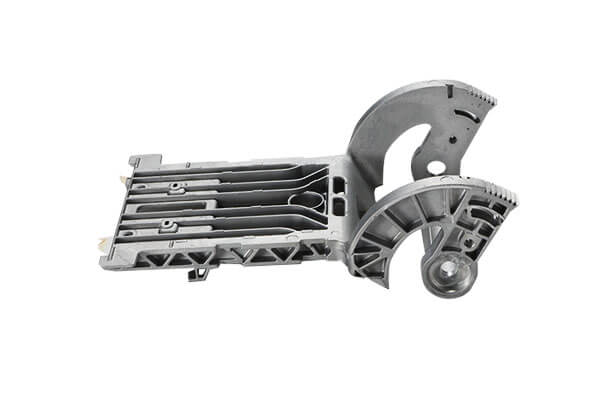
- Rolling: Produces thin sheets (e.g., aluminum foil for packaging, as thin as 6 microns) and structural plates for aerospace.
The Airbus A350 uses 50% rolled aluminum alloy plates in its fuselage for corrosion resistance.
Copper: Precision in Drawing and Forging
Copper’s higher melting point (1084°C) and superior lubricity favor precision forming:
- Wire Drawing: Copper wires, essential for electrical systems, are drawn to diameters as small as 0.02mm for microelectronics.
A single 1000-kW transformer requires 500 kg of drawn copper wire to minimize resistance. - Forging: Used to create high-strength components like valves and connectors.
Copper-nickel (70/30 Cu-Ni) forgings withstand seawater corrosion in offshore oil rigs, with a service life exceeding 30 years. - Stamping: Forms copper sheets into heat exchanger fins, where its 401 W/m·K thermal conductivity maximizes heat transfer in HVAC systems.
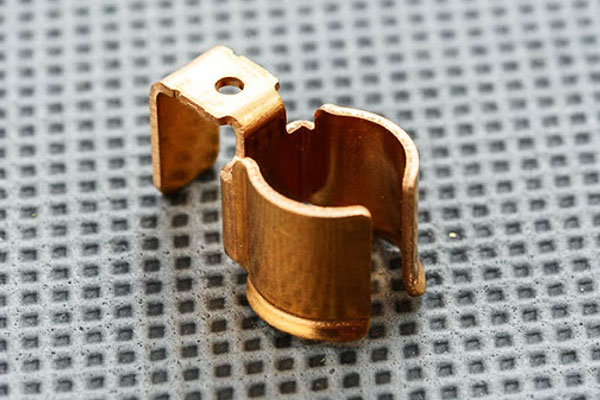
Joining Techniques: Welding, Brazing, and Bonding
Welding: Strength Under Heat
- Aluminum Welding:
-
- Requires gas tungsten arc welding (GTAW/TIG) with argon shielding to prevent oxide (Al₂O₃) inclusion, which can cause brittle joints.
Welding speeds average 150–200 mm/min for 3mm-thick aluminum plates. - Example: Boeing 777 wings use friction stir welding (FSW), a solid-state process, to join 7075-T6 aluminum panels, eliminating heat-affected zone weaknesses.
- Requires gas tungsten arc welding (GTAW/TIG) with argon shielding to prevent oxide (Al₂O₃) inclusion, which can cause brittle joints.
- Copper Welding:
-
- TIG or oxy-acetylene welding dominates, leveraging copper’s high thermal conductivity to distribute heat evenly.
Copper pipes in plumbing are often joined via brazing with silver alloy filler metal, creating leak-proof joints rated for 200+ psi.
- TIG or oxy-acetylene welding dominates, leveraging copper’s high thermal conductivity to distribute heat evenly.
Brazing and Soldering: Lower-Temperature Joining
- Aluminum Brazing: Requires flux to break down the oxide layer, limiting its use in sensitive electronics.
Aluminum heat exchangers in EV batteries use vacuum brazing at 580°C to ensure uniform bond strength (150–200 MPa). - Copper Soldering: Highly compatible with lead-free solders (e.g., Sn-Ag-Cu alloys), essential for PCB assembly.
A typical smartphone motherboard contains 50–100 copper solder joints, ensuring reliable signal transmission.
Machinability: Cutting and Shaping with Precision
Aluminum Machinability:
- Low hardness (20–30 HB) and low cutting forces allow high-speed machining (spindle speeds up to 20,000 RPM in CNC mills).
However, it is prone to burring and work-hardening, requiring sharp carbide tools. - Application: Aerospace components like landing gear brackets are machined from aluminum billets with a material removal rate of 500 cm³/min, reducing production time by 40% vs. steel.
Copper Machinability:
- Excellent chip formation and lubricity (due to high ductility) make it ideal for finishing.
Free-machining brass (e.g., C36000) achieves surface finishes as low as Ra 0.8μm, critical for valve stems and gears. - Limitation: High thermal conductivity can overheat cutting tools if not properly cooled, necessitating abundant coolant use.
Recycling: Closing the Loop
Aluminum Recycling
- Process: Single-stream recycling via melt furnaces, where scrap (e.g., old cars, beverage cans) is melted at 700°C, with flux removing impurities.
Energy savings reach 95% compared to primary production (13 kWh/kg vs. 225 kWh/kg for new aluminum). - Efficiency: 95% of aluminum ever produced remains in use, with automotive recycling rates exceeding 75%.
A recycled aluminum can is remelted and back on shelves in just 60 days.
Copper Recycling
- Process: More complex due to alloy diversity (e.g., brass, bronze, and copper-nickel). Scrap is sorted, melted, and refined via electrolysis to achieve 99.99% purity.
- Efficiency: 85% overall recycling rate, with e-waste recovery systems (e.g., Umicore’s facilities) achieving 95% copper extraction from PCBs.
Recycled copper reduces greenhouse gas emissions by 86% vs. mined copper.
8. Applications of Aluminum vs. Copper
While copper is celebrated for its unmatched electrical and thermal conductivity, aluminum is prized for its low density, corrosion resistance, and excellent formability.
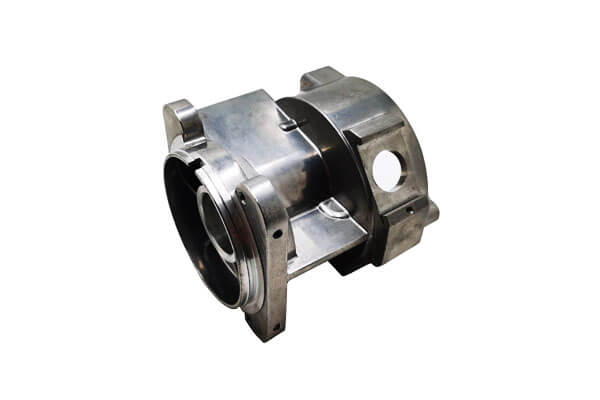
Electrical Power Transmission and Distribution
Copper: The Gold Standard in Conductivity
Copper remains the material of choice in applications where electrical performance is paramount:
- Electrical wiring: Used extensively in residential, commercial, and industrial buildings due to its high conductivity (100% IACS) and superior thermal stability.
- Busbars and switchgear: Preferred in switchboards and distribution panels where reliability and low contact resistance are critical.
- Transformers and motors: Copper windings enhance efficiency and reduce power losses in high-performance electric motors and transformers.
Aluminum: The Lightweight Workhorse for High-Voltage Lines
Aluminum dominates in large-scale and long-distance transmission:
- Overhead transmission lines (e.g., ACSR conductors): Aluminum’s light weight (2.7 g/cm³) and low cost per ampere enable the use of larger-diameter conductors to compensate for its lower conductivity.
- Service drop cables and utility feeders: Modern AA-8000 series aluminum alloys are widely accepted in utility applications due to improved reliability and safety.
Example: A 1000 mm² aluminum cable can carry the same current as a 630 mm² copper cable but weighs about 50% less, reducing structural support requirements and installation costs.
Heat Exchangers, Radiators, and HVAC
Copper: High Performance in Compact Systems
- Air conditioners and refrigeration coils: Copper’s thermal conductivity (~398 W/m·K) ensures rapid heat exchange, ideal for compact, high-efficiency cooling systems.
- Heat pipes and vapor chambers: Used in laptops, data centers, and power electronics due to superior thermal transfer and reliability.
Aluminum: Mass-Market Thermal Management
- Automotive radiators and condensers: Aluminum’s cost-efficiency and corrosion resistance make it standard in vehicle cooling systems.
- HVAC evaporators and fins: Lightweight extruded or roll-bonded aluminum enhances design flexibility and reduces energy consumption in transport and building systems.
- LED heat sinks: Often made from die-cast or extruded aluminum due to its combination of moderate conductivity and excellent machinability.
Automotive, Aerospace, and Construction
Automotive Sector
- Aluminum: Widely adopted to reduce vehicle weight and improve fuel efficiency. Applications include:
-
- Body panels and frames (e.g., Tesla Model S uses ~250 kg of aluminum per vehicle)
- Wheels, engine blocks, and suspension components
- Copper: Crucial for:
-
- Electrical wiring harnesses (a modern EV contains over 40 kg of copper)
- Motors and battery systems in electric vehicles
Aerospace Sector
- Aluminum: Dominant in aircraft due to its high strength-to-weight ratio.
-
- Alloys like 2024 and 7075 are used in fuselage, wings, and structural members.
- Copper: Employed in specialized areas such as de-icing systems, avionics, and RF shielding, where conductivity and EM interference reduction are essential.
Construction and Architecture
- Aluminum:
-
- Used in window frames, curtain walls, roofing panels, and siding due to its corrosion resistance and aesthetics.
- Anodized or coated finishes provide decades of maintenance-free service.
- Copper:
-
- Found in plumbing, roofing, cladding, and decorative facades.
- Its natural patina offers a timeless appearance and long-term durability (over 100 years lifespan in roofing applications).
Electronics and Telecommunications
- Copper:
-
- Dominates in printed circuit boards (PCBs), connectors, and microprocessors due to low electrical resistance and excellent solderability.
- Essential in coaxial and Ethernet cables for high-speed data transmission.
- Aluminum:
-
- Used in capacitor foils, smartphone frames, and lightweight enclosures.
- Increasingly adopted in heat-dissipation components for power electronics and RF modules.
Renewable Energy and Emerging Technologies
- Copper:
-
- Integral in solar panels, wind turbine generators, and electric vehicle charging infrastructure.
- High-reliability connectors and inverters require copper for safety and efficiency.
- Aluminum:
-
- Used in solar panel frames, mounting structures, and battery casings.
- Weight savings are particularly important in portable and mobile renewable systems.
9. Advantages & Disadvantages of Aluminum vs. Copper
Choosing between aluminum vs. copper requires a nuanced understanding of their strengths and limitations.
Aluminum: The Lightweight, Versatile Workhorse
Advantages of Aluminum
Exceptional Lightweight Performance
Natural Corrosion Resistance
Unmatched Recyclability
Cost-Effective at Scale
Formability and Manufacturing Flexibility
Disadvantages of Aluminum
Inferior Conductivity
Galvanic Corrosion Risks
Lower Melting Point and High-Temperature Limits
Surface Treatment Dependency
Mechanical Limitations in Pure Form
Copper: The High-Performance, Conductive Standard
Advantages of Copper
Unrivaled Electrical and Thermal Conductivity
Superior Mechanical Properties in Alloys
Exceptional Durability and Longevity
Natural Antimicrobial Properties
Precision Manufacturing Compatibility
Disadvantages of Copper
High Density and Weight
Premium Cost and Scarcity
Environmental and Mining Impacts
Susceptibility to Specific Corrosive Agents
Recycling Complexity
10. Summary Comparison Table of Aluminum vs. Copper
| Property / Attribute | Aluminum | Copper |
|---|---|---|
| Atomic Number | 13 | 29 |
| Density | ~2.70 g/cm³ | ~8.96 g/cm³ |
| Color / Appearance | Silvery-white, dulls to gray oxide | Reddish-brown, develops green patina over time |
| Melting Point | ~660 °C (1220 °F) | ~1085 °C (1985 °F) |
| Electrical Conductivity | ~61% IACS | 100% IACS (benchmark material) |
| Thermal Conductivity | ~235 W/m·K | ~398 W/m·K |
| Tensile Strength (common alloys) | 90–570 MPa (e.g., 6061: ~290 MPa; 7075-T6: ~570 MPa) | ~200–400 MPa (annealed Cu: ~210 MPa; alloys up to ~400 MPa) |
Yield Strength (typical range) |
30–500 MPa | 70–300 MPa |
| Modulus of Elasticity | ~69 GPa | ~110–130 GPa |
| Corrosion Resistance | Excellent (forms protective Al₂O₃ layer) | Good, but varies with environment (patina forms naturally) |
| Formability / Machinability | Excellent; easily extruded, rolled, or cast | Good, but hardens during cold work |
| Fatigue Resistance | Moderate | Superior (less notch-sensitive) |
| Ductility | High (varies by alloy, elongation 10–20%) | Very high (elongation often >30%) |
| Recyclability | Excellent; energy-efficient recycling | Excellent; widely recycled and reused |
| Cost per Kilogram (June 2025) | ~$2.50–$3.00 USD/kg (varies by alloy and purity) | ~$8.00–$9.00 USD/kg (subject to global market fluctuations) |
| Weight Advantage | 1/3 the weight of copper | Heavier; structural load impact |
| Common Applications | Aerospace, automotive, packaging, construction, HVAC | Electrical wiring, electronics, plumbing, heat exchangers |
| Sustainability Impact | Low CO₂ when recycled; minimal in-use emissions | High mining impact; excellent long-term durability |
11. Conclusion
In conclusion, the choice between aluminum vs. copper is not binary—it’s contextual. Aluminum offers superior weight savings, ease of fabrication, and cost-efficiency.
Copper delivers unmatched electrical and thermal performance, durability, and material stability.
By examining the technical data and considering application-specific demands—whether electrical, mechanical, thermal, or economic—engineers can make well-informed, performance-driven material choices.
For power lines? Choose aluminum. For circuit boards? Choose copper.
In today’s competitive engineering landscape, materials aren’t just commodities—they’re strategic assets.
FAQs
Which is better, copper or aluminum?
Neither material is universally “better”—it depends on the application.
- Copper is better when you need maximum electrical and thermal conductivity, mechanical durability, and high corrosion resistance in harsh or critical environments.
- Aluminum is better when weight, cost, and corrosion resistance are more important than peak conductivity or strength.
In summary:
- For electrical connectors, high-performance electronics, and underground installations, copper is typically the preferred choice.
- For power transmission lines, structural parts, HVAC, and aerospace components, aluminum offers better value and performance balance.
What lasts longer, copper or aluminum?
Copper generally lasts longer, especially in tough environments like underground or marine applications.
- Copper can last over 100 years in plumbing and roofing due to its stable corrosion products (e.g., patina).
- Aluminum, while corrosion-resistant thanks to its oxide layer, is more susceptible to galvanic corrosion and fatigue cracking under some conditions.
That said, with proper design and protective treatments, aluminum can also achieve decades of service life in structures, electrical systems, and transportation.
Why is aluminum preferred to copper?
Aluminum is preferred over copper in many industries due to several advantages:
- Cost: Aluminum is typically 3x cheaper per kilogram than copper.
- Weight: It is 67% lighter, making it ideal for aerospace, automotive, and large-scale infrastructure.
- Corrosion Resistance: Aluminum forms a self-healing oxide layer that protects it in many environments.
- Ease of Fabrication: Aluminum is easy to extrude, roll, and form, especially for large or complex shapes.
As a result, industries often choose aluminum where cost efficiency, light weight, and good-enough conductivity outweigh copper’s performance edge.
Why is aluminum replacing copper?
Aluminum is replacing copper in several sectors due to a combination of economic, material, and sustainability pressures:
- Rising Copper Prices: Copper’s price has significantly increased over the past decade, making it less viable for cost-sensitive or high-volume applications.
- Weight-Saving Goals: In transportation and construction, aluminum helps reduce weight, leading to improved energy efficiency and lower operating costs.
- Technological Advances: New aluminum alloys (e.g., AA-8000 for wiring) have improved safety, conductivity, and durability, making them suitable copper alternatives.
- Supply Chain and Sustainability: Aluminum is more abundant and easier to recycle at a lower energy cost, making it favorable in sustainable engineering strategies.
